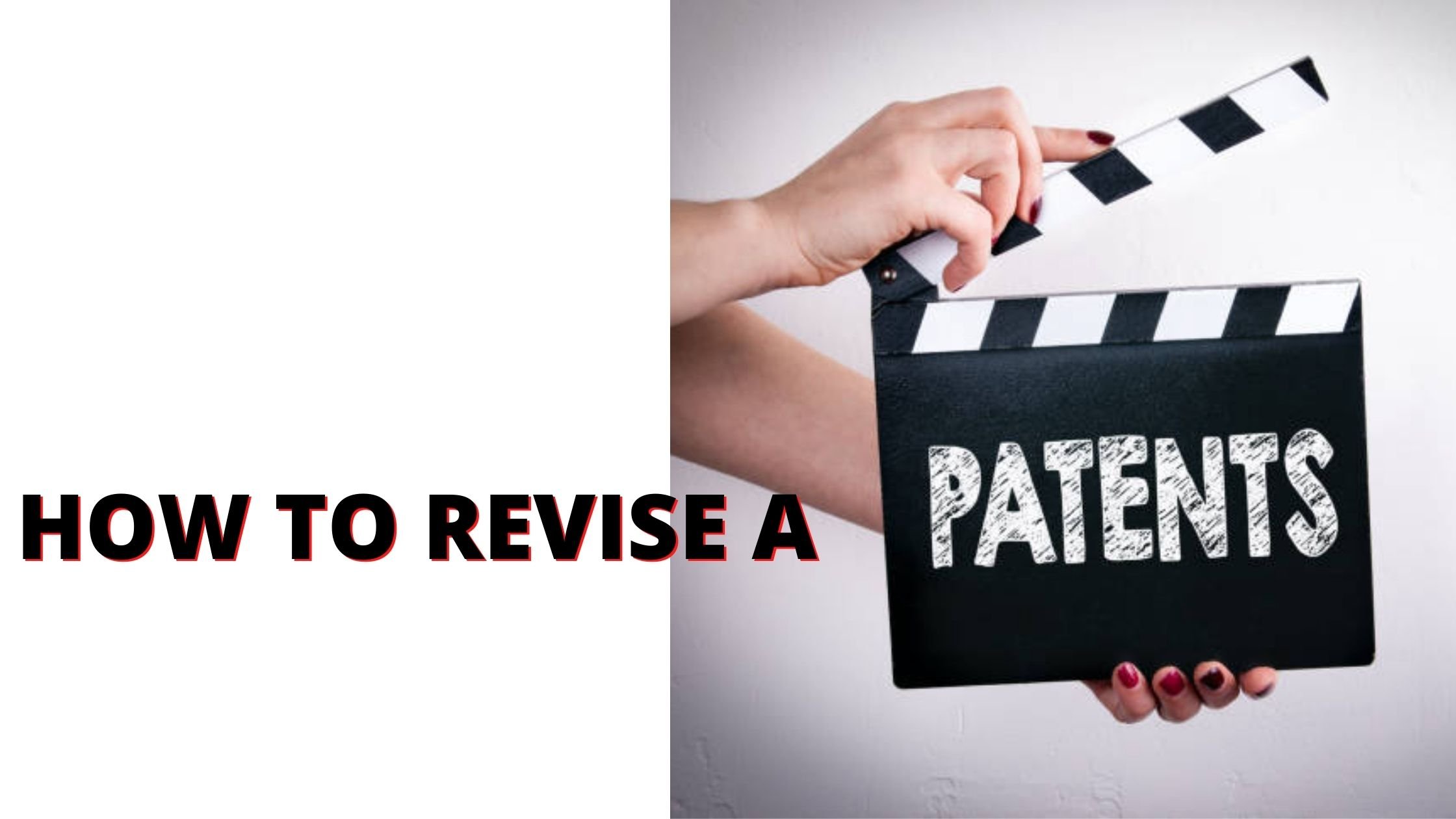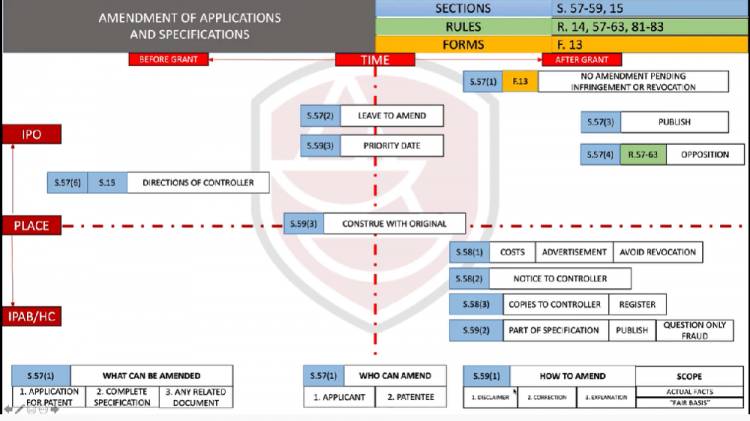How to Revise a Patent?
Once inventors have effectively achieved the protection of a patent, they may think that process is finished. This is frequently right but sometimes inventors will require revising a patent to add/ amend or alter the patent specification. To revise a patent, inventors are not needed to file a whole fresh patent application instead of that they can revise the patent by duly filing a specific form according to state patent laws and can again start the review procedure.

Once inventors have effectively achieved the protection of a patent, they may think that process is finished. This is frequently right but sometimes inventors will require revising a patent to add/ amend or alter the patent specification. To revise a patent, inventors are not needed to file a whole fresh patent application instead of that they can revise the patent by duly filing a specific form according to state patent laws and can again start the review procedure.
There are two ways by which one can amend the patent -
1. Amendments in Names 2. Amendments in claims
1. Amendments in Names:
If various individuals or organization comes together and works on innovation then they may not mention the names of all true owners. To make a patent valid, the addition of all true owners must be included to enforce the patent rights in an infringement action. And, it becomes required in the future.
To amend the names of the patent proprietor, the applicant is required to send a Recordation Cover Sheet to the Assignment Recordation Branch of the respective patent office (In case of US, need to send it to USPTO) The procedure is similar, no matter patent is pending or approved.
2. Amendments in Claims:
An applicant can modify the claims also unless he/she doesn't want to include a fresh claim. If an applicant wants to include a fresh claim then he needs to file the new application for that claim. There are specific regulations for the amendments of claims in respective jurisdictions.
Eg: Supplying modified drawings to the patent office. Amending the written claim is essential for infringement or any court procedures relevant to that patent. In the US, an applicant can confer with 37 C.F.R 1.121 to revise a whole list of the elements of an application that they can modify. To guarantee that they are following the appropriate regulations, the inventors may wish to connect with the common clerk's office.
These types of amendments are exceptional. They most frequently occur when an inventor finds out that they didn't explain the claims in an accurate manner. Few times, they may discuss with a qualified attorney for legal advice and how to explain the claim more particularly within boundaries of the law. An attorney also can direct them on how to draft the revision of the patent so that it will not result in any fresh claim that could require filing a fresh application.
US Provisions:
-
It can take a minimum take 2 or more years to file and grant a patent at the United States Patent and Trademark Office (USPTO).
-
According to 37 C.F.R. 1.41(a), which requires that the application "include, or be amended to include, the name of innovators for any innovation specified in the application”,
-
Irrespective of the Grant of Patent stage or examination stage, the inventor may put forward a Recordation Cover Sheet to the Assignment Recordation Branch of USPTO. This office will give a guarantee that the patent will be revised accordingly.
-
Through the Electronic Patent Assignment System (EPAS), the Recordation Cover Sheet can be submitted online.
-
The procedure of looking for revision to innovator’s names is stated in 37 C.F.R. Section 1.48.
-
As per 37 C.F.R. 42.121 and 37 C.F.R. 1.121, a patent owner might be looking to revise the sections such as descriptions of claims or the drawings filed with USPTO to further sustain the innovation claimed.
-
More precisely, 37 C.F.R. 1.121 lays down every potential part that an innovator looks for revision.
Indian Provisions:
Under Indian Patent Law, 1970, one separate chapter is assigned to amending patent applications and specifications. According to Section 57 and Section 59 of the Act which read with Rules 81 to 83of the Patent Rules 2003, an applicant can amend concerning some specifications and/or claims.
As Section 59 (1) of the Act makes clear that, the amendments only made through
-
Disclaimer- to restrict the claim’s scale
-
Correction of a palpable error
-
Description of the term, feature, drawing, or exclusive distinctiveness to clarify the claim superior.
While amending a specification has a retrospective effect and the rationale of a patent specification is to define the invention's scope, which further decides the value of a patent, it is not probable to expand the boundaries of the claim or add extra subject matter. This will be not fair to third parties if authorized.
Practically, amending claims is usually permissible in situations where:
-
Modification in name / residing location of the inventor or applicant, or the priority date or title;
-
Modification in including facts, including right typographical errors and translation-related errors
-
The inclusion of reference numbers
-
The replacement of the phrases in a claim to become it to more particular
-
Concentrate on prior art that may not available at the application filing time to avoid the effect on novelty/inventive step criteria
-
Merging multiple dependent claims into an independent claim or combining two independent claims;
-
Supplying constant pattern in claims across jurisdictions and;
-
Further explaining the meaning of the claim.
To revise a claim in the patent, an applicant must fill Form 13 along with the given fees. Moreover, as per Patent Manual 2019, the application must “state the nature of the proposed modification spotlighted inappropriate copy along with justification”.
To get to know the detailed procedure regarding amending the patent application, one can refer to the below flowchart.

Conclusion:
Revise a patent is a usual process at any stage of the proceedings and many inventors seek the amendment after a grant of a patent every year. The application can be modified before or after the first examination at the patent office or even after the second examination. It can also be amended after the last refection if an application has been refused. If an applicant is filing a notice of appeal against refusal the revision can be done after the date of the appeal. Amendments may also be done when and as particularly necessitate by the examiner of that application.
know more about, patents law, see the video below-
By -
Sushama Mhasurle












